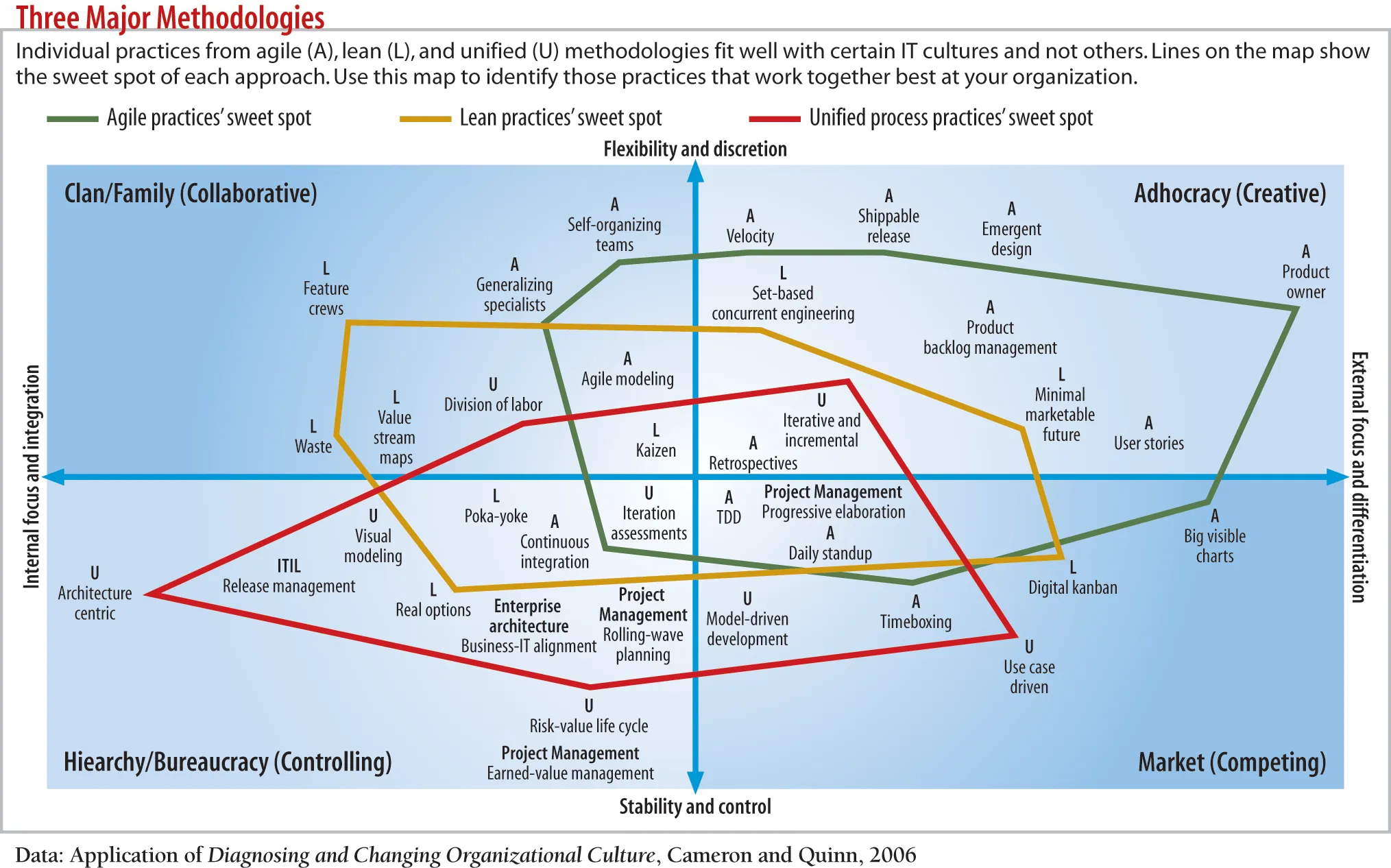Software Development Methods – Selecting a Pragmatic Approach
Blog: Business Process Management (BPM) InSights - Ian Louw
 Having personally done extensive work with many Organisations over the years to help them create, adapt and implement various types of SDLCs for specific transformational needs, I found the recent article by Mark Kennaley very insightful as a categorised summary of the types of Methods that exist.
Having personally done extensive work with many Organisations over the years to help them create, adapt and implement various types of SDLCs for specific transformational needs, I found the recent article by Mark Kennaley very insightful as a categorised summary of the types of Methods that exist.
Mark describes how the various Software Development Methods (used during an SDLC) often reflect the culture, structure and processes of the Organisation and promotes either positive or negative characteristics when it comes to Delivery of Solutions that meet Business needs.
He states that the typical negative impact on an organisation manifests itself in various costly ways:
…Each time an organization embraces a new methodology, it triggers a large change management exercise. Within IT, this change typically involves a three-to-five year process that results in the following direct costs for a 1,000-person IT organization:
- Consulting, training, and mentoring costs to go from novice to competent, and even expert, using Stuart and Hubert Dreyfus’ skill acquisition model. For 1,000 people, this can cost $1 million to $2 million.
- Knowledge management, to avoid the risk of relying on tacit knowledge in the heads of coaches and consultants. If performed, the capture of standard work, or “our way of working,” results in more than $1 million in costs related to process-related software.
- Changes in approach can also trigger the need for new process management tools. Cost can range from free to $1 million or more.
- Costs related to putting a new software delivery infrastructure in place. Hitting the reset button can cost upward of $5 million.
Many SDLC methods are similar but due to their origins and adoption over time has led to the reality that no two are exactly the same. In the image below Mark shows how the various approaches can be categorised into four Organisational types as aligned to Agile, Lean and Unified Methods:
- Clan/Family Culture: Here you have a culture that emphasizes collaboration. Your leaders tend to be facilitators and team builders, who value commitment and communication. They think effectiveness is driven by developing people and spurring participation.
- Adhocracy Culture: Your company emphasizes creativity and has leaders who are entrepreneurial innovators, who value transformation and agility, and have a high level of risk tolerance. They think that innovation and vision are the best paths to effectiveness.
- Market Culture: Here the orientation is competition. Your leaders are hard-driving competitors, who emphasize goal achievement, market share, and profitability. Customer focus and aggressive competition lead to effectiveness.
- Hierarchy/Bureaucracy Culture: Your company tends to focus on control, with leaders who coordinate, monitor, and organize. Efficiency, timeliness, consistency, and risk aversion are the watchwords. Control and efficiency are seen as the best path to effectiveness.
Tagged: Agile, BPM, Lean, RUP, SDLC, Systems Development Life Cycle, Unified
![]()
